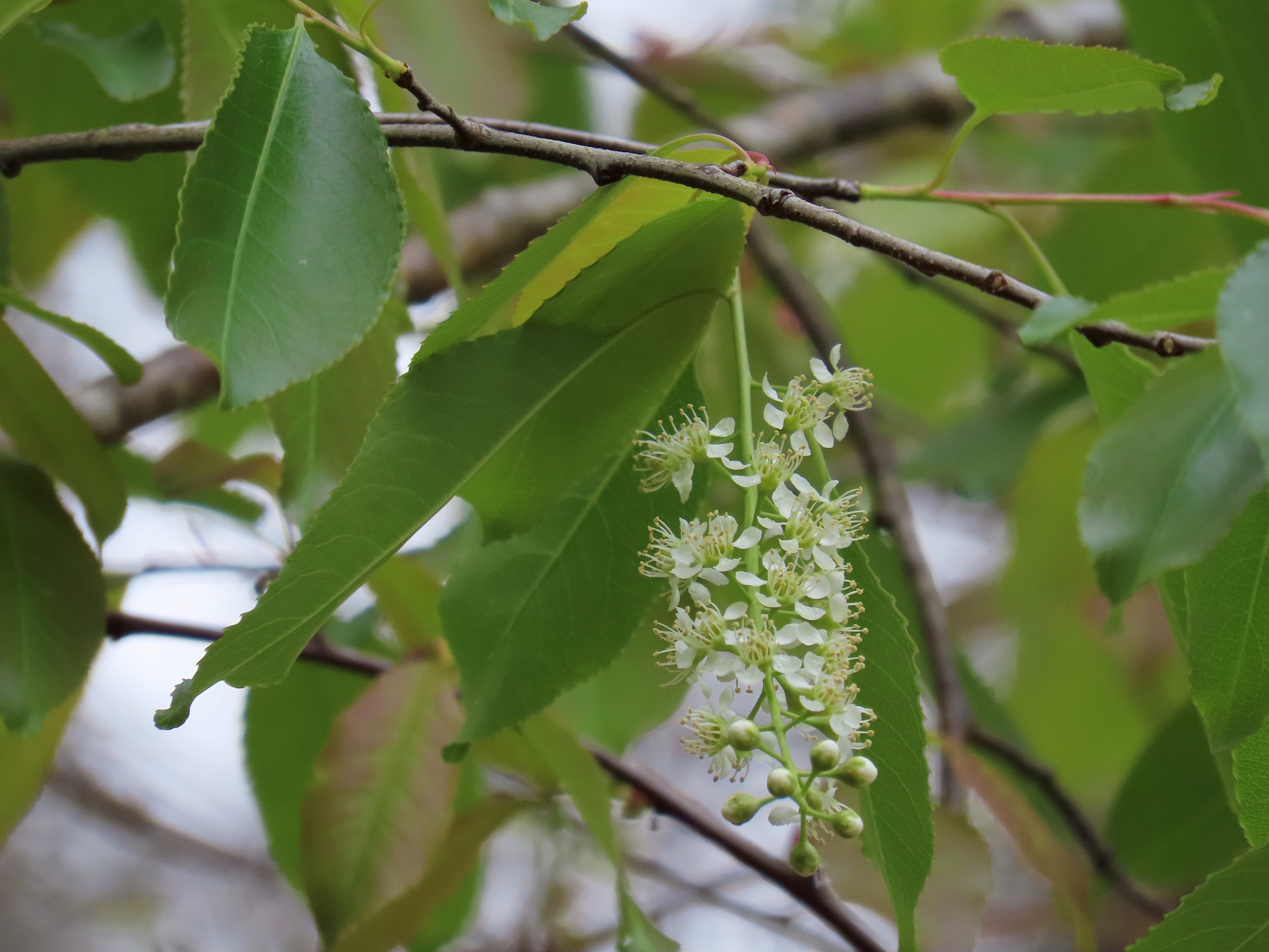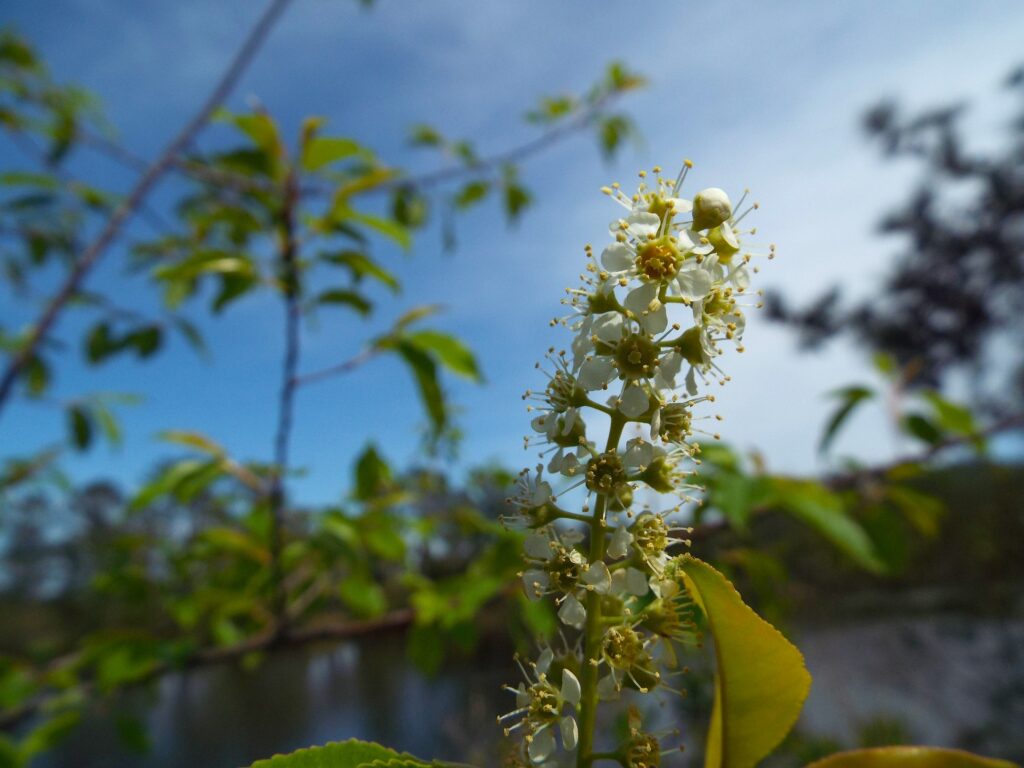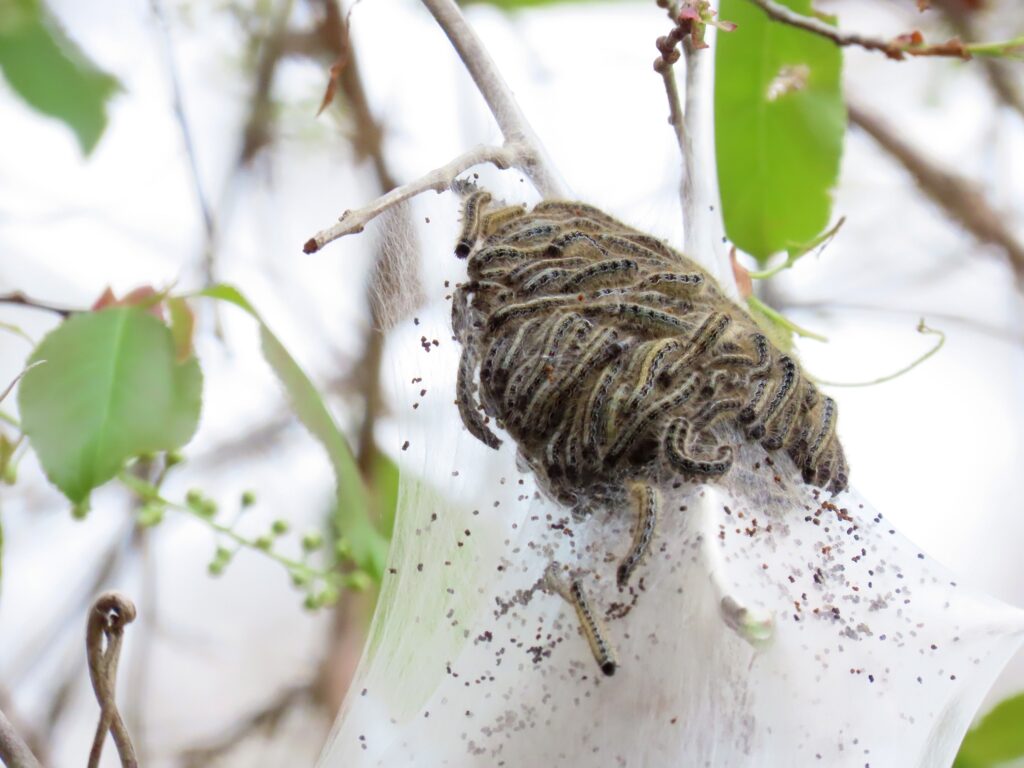



This week for Flora and Fauna Friday we have a native fruit tree that’s scattered around the island just as it scatters its fruit below it, Black Cherry (Prunus serotina).
Black Cherry is a member of the stone fruit genus, which includes Cherries, Peaches, Plums, Apricots, and Almonds. It’s found throughout the Eastern United States (and is even an invasive species in some parts Europe). Black Cherry loves sunny fields and well-drained soils and can put on a lot of height in a short amount of time. However, it will grow alright in most habitats and can tolerate some shade. The best way to recognize Black Cherry is by its finely flaky, silvery-black bark. That bark envelopes some of the finest wood in the Southeast. The deep orange timber of Black Cherry has long been prized for its woodworking merits and is often used for building high-end cabinetry and furniture. Another easy way to tell a Black Cherry is by the leaf. But it’s not the simple elliptical shape, glossy emerald-green color, alternate arrangement, or fine marginal serrations that give it away, it’s the scent. Crush a Black Cherry leaf and give it a whiff and you’ll be greeted with the unmistakable scent of cyanide. A scent most recognizable from fresh Almonds or, for us gardeners, from Greenhouse Millipedes. This scent alone is not harmful to us but that cyanide is indeed there for poisonous purposes. Black Cherry’s tissues are stuffed with cyanide to deter herbivores and insects from feeding on it. However some species, like the Eastern Tent Caterpillars I’ve covered before and the Eastern Tiger Swallowtail, have learned to ignore this cyanide seasoning. Follow the branches down in spring and you’ll likely be greeted by the flowers of Black Cherry. These blooms are small and white but conglomerated into a large hanging bottlebrush that attracts many a bee. These flowers of course give way to a fruit in due time. In early summer the fruits begin to ripen and drop en masse. Eat fruit is only a quarter to third of an inch in size but boy are there a lot of them. These cherries are spherical and so deep a red as to be black. These are a favorite food of songbirds, Turkeys, Quail, and Raccoons. They’re also edible to humans as well but they’re rather bitter and better cooked and sweetened than raw. The pits are not edible, they’re extra cyanide-y FYI.